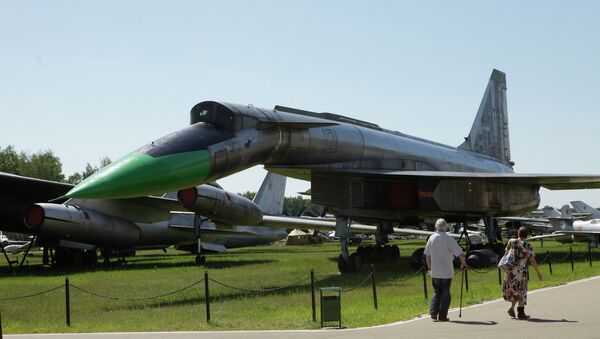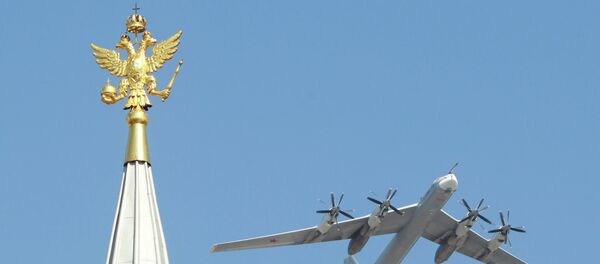The initial design developed in 1964 called for a tailless delta-wing aircraft with four turbojet engines placed in a single "gondola" under the fuselage.
The wing had a break in the leading edge, and a small forward stabilizer was included.
The plane was to be equipped with three controlled H-45 solid-fuel missiles, located under the fuselage.
During the design process, the arrangement of the aircraft engines was modified and the number of missiles was reduced to two.
Construction made extensive use of titanium and steel alloys, and the T-4 used an advanced electrohydraulic, quadruple redundancy fly-by-wire system.
It was fitted with a 'droop snoot' that offered good visibility in the landing configuration, but when the nose of the aircraft was up and locked, the pilots had no forward visibility and all flying was on instruments.
The final design was 44.5m long, had a wing span of 22m, a wing surface of 295.7 square meters and a lift-off weight of 114 tons.
The calculated flight-characteristics indicated that the bomber would have a range of 6,000 km, maximum speed of 3,200 km/h at an altitude of 20,000-24,000 meters and an absolute ceiling of 25,000-30,000 meters.
The T-4 was immediately dubbed as “the killer of aircraft carriers” and was designed for use by the Soviet Strategic Air Force Command.
The development of the T-4 continued throughout the 1960s and a complete flying prototype was ready in 1971. Three more prototypes were started until the project was scrapped in 1975.
The last three prototypes were never finished. In all, six different T-4s versions were developed.
The 101 and 102 were built, the construction of the 103 and 104 was never finished and the 105 and 106 only existed on the drawing board.
The only aircraft to complete all flight tests was the 101 and it was also the only one that was spared after the project’s cancellation – it can now be seen at the famous Monino museum outside Moscow.



